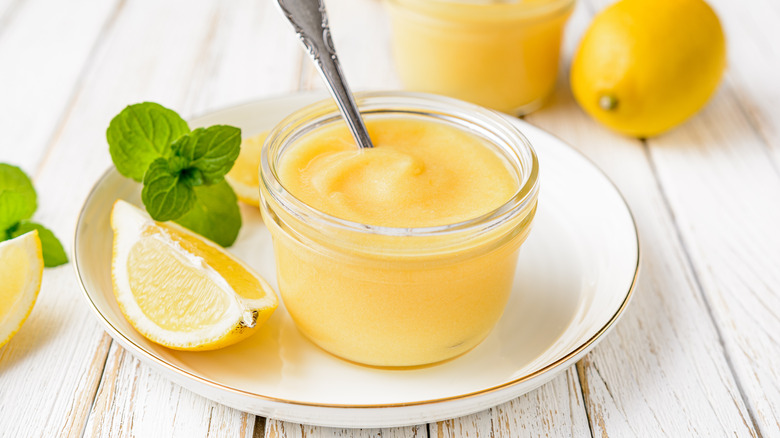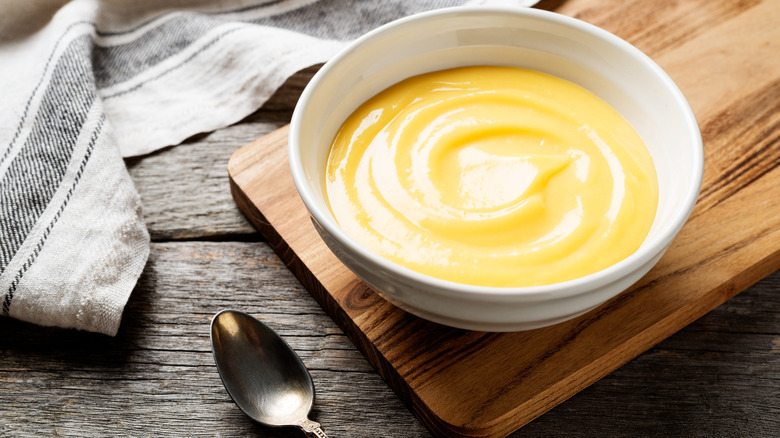Why You Should Try Using A Microwave To Make Lemon Curd
Of all the staples we have on hand in the kitchen, lemons are a must. The bright acidity of their juice brings balance to so many dishes, while their zest enlivens baked goods, simple syrups, and fresh salads. Lemons also tend to keep forever, which is all the more reason we stock up on them basically every time we go grocery shopping.
If there's one area in which lemons really shine it's dessert. Where would we be without lemon bars, lemon meringue pie, lemon pound cake, and lemon sorbet? In a pretty dark, sad place, that's where. One of our favorite sweets of all time is lemon curd, a versatile lemon and egg yolk custard that can be poured into tarts, spread onto toast, or dolloped atop ice cream. And while lemon curd is pretty simple to make on the stovetop, we also love the variation of making it in the microwave — it's just as reliable, and makes for easy cleanup.
Microwaved curd is a win
The idea of cooking a delicate custard in the microwave might seem scary — after all, custards can be finicky. Surrendering your trust to the closed-door appliance, where you can't poke or prod the custard to make sure it's alright, can be a leap of faith, but one that will work out in your favor with lemon curd. You see, unlike some custards that need to be tempered — typically, heating dairy such as cream or milk, then whisking in the egg part of the dish slowly so that it doesn't scramble — lemon curd doesn't include any dairy (besides the butter) and doesn't need to be tempered.
So go ahead and microwave your lemon curd with trust. To do so, tip sugar into a microwave-safe bowl, then grate your lemon zest right into the sugar. Rub the zest through the sugar with your fingers, then add eggs, egg yolks, and lemon juice, whisking to combine. Then, microwave the mixture in one-minute zaps, taking it out and stirring between each, until it reaches a temperature of 185 degrees Fahrenheit. Then, whisk in the butter until the mixture is smooth, pass the curd through a fine-meshed strainer into your storage container, and cool it to room temp before refrigerating. Now you're ready to indulge — no fussy techniques required.

